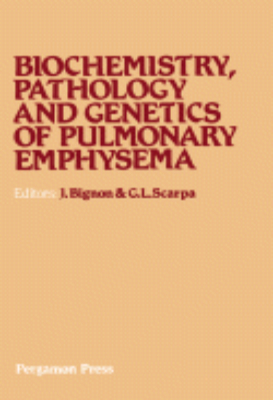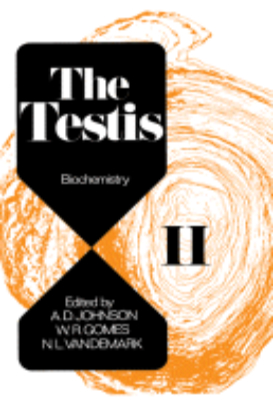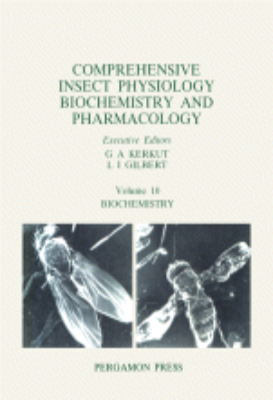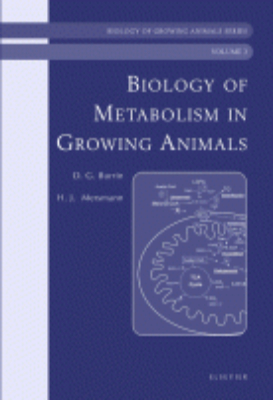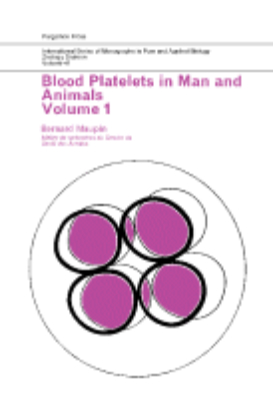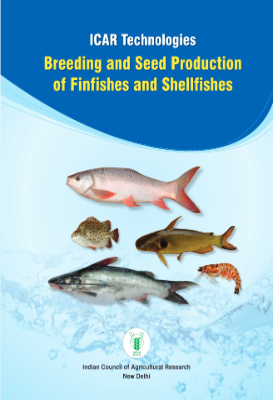ebooks
Biochemistry of Thermophily
Biochemistry of Thermophily covers the proceedings of a seminar held under the auspices of the U.S.-Japan Cooperative Science Program at the East-West Center in Honolulu, Hawaii on June 22-24, 1977. This seminar focuses on biochemistry of thermophilic microorganisms. It presents an achievement in the complex field of thermophiles and their unique properties. This book discusses the fatty acid composition in several strains of moderately and extremely thermophilic bacteria, the membrane and lipid components, the biosynthesis and function of -cyclohexyl fatty acids, and the influence of growth temperature and lipid state on lipid and protein distribution. It then presents the ecologic and genetic aspects of thermophilic bacteria, including their morphology, surface structure, and transfection. It also examines the function and thermostability of ribosomal proteins, polypeptides, and polyamines in thermophilic bacteria. Finally, the book discusses the thermostability of proteins, the effect of amino acid substitution on conformational stability of thermophile, the thermophilic enzymes, and the physiology of thermophilic bacteria. This book will be helpful to molecular and research biologists, teachers, and students who wish to expand their understanding on mechanisms of thermophilicity, thermostability, and thermophilic microorganisms.
Biochemistry of Vision
Biochemistry of Vision provides information pertinent to vision biochemistry. This book discusses the biochemical information derived primarily from studies on nonocular tissues and describes the biochemical reactions related to the function of the retina and pigmented epithelium. Organized into 16 chapters, this book begins with an overview of the visual system and the structure of the vertebrate eye. The text then proceeds with a discussion of photoreceptor, which has a highly membranous structure. Other chapters cover a brief discussion of several topics, including biomembranes, photochemistry, spectral properties of retinal isomers, and the photochemical properties of the chromophore of rhodopsin. This book discusses as well the properties and intramembrane disposition of rhodopsin. The final chapter deals with the biochemistry of photoreceptor disorders and summarizes the basic knowledge on neurotransmitters and electrophysiology in the retina. This book is intended for ophthalmologists and medical students who are interested in the molecular aspects of photoreceptor diseases.
Biochemistry Pathology and Genetics of Pulmonary Emphysema
Biochemistry, Pathology and Genetics of Pulmonary Emphysema documents the proceedings of an international symposium held in Sassari, Italy, 27-30 April 1980. Research on the origins of emphysema has acquired more importance than functional diagnostic studies. There are various hypotheses concerning the development of emphysema. Some cases of emphysema are linked to defects in metabolic functions of the vessels while others are linked to a disturbance in repair processes. The papers in this volume are organized into four sections. Section 1 contains studies on the pathology and biochemistry of lung connective tissue. Section 2 deals with animal models. Section 3 on proteases and antiproteases includes studies on the characteristics and identification of biological specimens, and alpha1-proteinase inhibitor. Section 4 takes up the risk factors and therapeutic approaches for lung disease. Other papers in the volume were presented during two roundtable discussions on the biochemistry of connective tissue components in emphysema and therapeutic approaches.
Biochemistry: 1970
The Testis, Volume II: Biochemistry focuses on the study of the biochemistry of mammalian testis. Composed of contributions of authors, the book starts with the endocrinology of the testis. Topics covered include testicular estrogens and androgens; the effect of age on testicular steroidogenesis; and endocrine regulation of spermatogenesis. The compilation also presents a histochemical analysis of the localization of testicular enzymes. Covered are histochemistry; enzymes of the fetal and mature testis; and the factors affecting testicular enzymes. The text notes as well that blood flow, hormones, nutrition, age, and temperature can affect testicular lipids and that the testis has testicular proteins and nucleic acids. The selection also outlines the growth and development of mammalian testis, and then ends with the discussions on hormonal regulation; chemical constituents; and testicular development, structure, and spermatogenesis of invertebrate testes. The compilation will best serve the interest of readers interested in studying the structure and functions of the testis.
Biochemistry: 1977
Biochemistry: The Chemical Reactions of Living Cells is a 16-chapter reference source on chemical structures and reactions of living cells. The first three chapters of this book contain introductory material on cell structure, molecular architecture, and energetic. The subsequent chapters examine the allosteric effect of the binding structures of oligomeric enzymes, microtubules, viruses, and muscle. These chapters also describe the structures and chemical properties of membranes and of the surrounding cell coats. The discussions then shift to the general properties of enzymes, the kinetics of chemical reactions, and the various mechanisms employed in enzymatic catalysis. Considerable chapters are devoted to the reaction sequences found in metabolism. These chapters particularly examine the carbohydrate and lipid metabolism; photosynthesis; and biosynthesis and catabolism of an enormous number of nitrogenous compounds. The final chapters highlight the genetic and hormonal control of metabolism, development, and brain function. Biochemistry teachers and students will find this book of great value.
Biochemistry: 1985
The underlying theme of this volume is the understanding of the molecules and processes important in the primary metabolism of insects. The 19 chapters provide both rich historical perspectives and timely reviews of current research, as well as showing the extent of progress to be expected in the near future, including the application of advanced techniques now used for the study of microbial and mammalian processes. The major themes of metabolism, proteins and nucleic acids, and biochemical events in the nervous system each have several chapters devoted to them, but specific topics such as pigments, toxins, and aging are also covered in detail. This extensive volume is therefore an invaluable source of information not only for entomologists but also for all scientists whose work involves insect biochemistry, including zoologists, biochemists, and molecular biologists and geneticists.
Biofortified Varieties: Sustainable Way to Alleviate Malnutrition Third Edition
Nutrition plays central role in growth and development of healthy mind and body. We are
committed to providing a better and sustainable future for all the citizens through nutrition
and food security. Our aim is to ensure healthy lives and promote well-being of people of all ages
through nutritious food. It has been estimated that alleviating malnutrition is one of the most
cost-effective measures, with every $1 invested in proven nutrition programme offering benefits
worth $16.
ICAR has developed 87 biofortified cultivars in 16 crops that can be integrated into the food
chain to enable better health of human and animal populations. Of these, 48 cultivars are multinutrient-dense in nature with two or more traits combined in a single genotype. Dedication
of biofortified crop cultivars on October 16, 2020 (World Food Day) and September 28, 2021,
respectively by the Hon?ble Prime Minister to the nation is a testimony to the commitment
of the country and of the Indian Council of Agricultural Research (ICAR) towards fulfilling
country?s food and nutrition security. This bulletin entitled, ?Biofortified Varieties: Sustainable
Way to Alleviate Malnutrition? highlights the yield potential along with respective nutritional
characteristics of the varieties for propagation and use in the country. I do hope that the
information contained in this bulletin will be of immense use towards building a malnutrition
free India.
Biogenesis of Plant Cell Wall Polysaccharides
Biogenesis of Plant Cell Wall Polysaccharides contains the proceedings of a 1972 symposium on Biogenesis of Plant Cell Wall Polysaccharides held at the 164th National Meeting of the American Chemical Society, New York, New York. The symposium focuses on a broad range of interest from structural to functional aspects of cell wall polysaccharide biosynthesis in algae as well as in higher plants. Organized into 17 chapters, this book details the progress and understanding regarding the biosynthesis of cell wall components and the assembly of these components in the wall. It encompasses topics on cell wall polysaccharides, UDP-D-glucuronic acid pyrophosphorylase, and D-xylose. This reference also tackles the UDP-D-glucuronic acid, L-arabinose, D-apiose, and carbohydrate polymers. Furthermore, it explains other topics, such as on extensin, hydroxyproline-rich glycoprotein, cellulose, and polygalacturonic acid.
Biogeochemistry of Trace Elements in the Rhizosphere
"The rhizosphere in soil environments refers to the narrow zone of soil influenced by the root and exudates. Microbial populations in the rhizosphere can be 10 - 100 times larger than the populations in the bulk soil. Therefore, the rhizosphere is bathed in root exudates and microbial metabolites and the chemistry and biology at the soil-root interface is governed by biotic (plant roots, microbes) and abiotic (physical and chemical) interactions. The research on biotic and abiotic interactions in the rhizosphere should, thus, be an issue of intense interest for years to come. This book, which consists of 15 chapters, addresses a variety of issues on fundamentals of microscopic levels and the impact on food chain contamination and the terrestrial ecosystem. It is an essential reference work for chemists and biologists studying environmental systems, as well as earth, soil and environmental scientists. Key Features. 15 chapter book, which addresses a variety of issues on fundamentals of microscopic levels and the impact on food chain contamination and the terrestrial ecosystem"
Biological Approaches and Evolutionary Trends in Plants
Biological Approaches and Evolutionary Trends in Plants is a collection of papers presented at the Fourth International Symposium of Plant Biosystematics held on July 10-14, 1989 in Kyoto, Japan. Contributors, some are world's leading plant biologists, discuss the findings in evolutionary biology and issues in plant biosystematics in light of the evidence and ideas brought forward at various levels of biological organization, from molecule to cell, individual, population, species, and community levels. This volume is organized into four sections encompassing 22 chapters and begins with an overview of discoveries concerning parapatric differentiation of weed populations, including adaptive evolution in herbicide resistant biotypes and complex evolutionary patterns in weed-crop complexes of various groups. The next section explores molecular approaches in plant biosystematics, focusing on amino acid sequencing of proteins; restriction-site variations of cpDNA, mitDNA, rDNA, etc.; and chromosome-banding patterns revealed by differential staining. The discussion shifts to a wave of research in plant population biology and evolutionary ecology since the 1970s and its impact on biology and biosystematics. The book considers various aspects of reproductive biology and evolutionary changes in significant reproductive parameters and attempts to demographically quantify these parameters. The final chapter is devoted to the use of functional phylogenetic systematics for predictive ecology. This book will be of interest to plant biologists and scientists and researchers in fields such as biochemistry, botany, microbiology, ecology, and evolutionary biology.
Biology and Evolution of the Mexican Cavefish
"Biology and Evolution of the Mexican Cavefish features contributions by leading researchers in a comprehensive, unique work that examines a number of distinct areas of biologyevolution, development, ecology, and behaviorusing the Mexican cavefish as a powerful model system to further understanding of basic biological processes such as eye degeneration, hearing, craniofacial development, sleep, and metabolic function. These fish are currently being used to better understand a number of issues related to human health, including age-related blindness, sleep, obesity, mood-related disorders, and aging. The recent sequencing of the cavefish genome broadens the interest of this system to groups working with diverse biological systems, and has helped researchers identify genes that regulate sleep, eye degeneration, and metabolic function. Mexican cavefish are particularly powerful for the study of biological processes because these fish evolved independently in twenty-nine caves in the Sierra de el Abra Region of Northeast Mexico. These fish have dramatic adaptations to the cave environment, and this can be used to identify genes involved in disease-related traits. This scholarly text will be of interest to researchers and students throughout diverse areas of biology and ecology. It includes photographs of animals and behavior in laboratory and natural settings that will also increase interest and accessibility to non-experts.. Key Features. Includes a mixture of images and illustrations such as the geographical distribution of cave pools and the developmental biology of the nervous system. Features a companion site with geographical maps. Fills a notable gap in the literature on a topic of broad interest to the scientific community. Presents the recent sequencing of the cavefish genome as a groundbreaking development for researchers working with diverse biological systems"
Biology of Plant Litter Decomposition: Volume 1 1974
Biology of Plant Litter Decomposition, Volume 1 focuses on decomposition of various types of litter, which include all plant remains, ranging from still standing dead trees to the decomposing hyphae of fungi and bacterial cells, including herbivore dung. The book is organized into seven chapters, each devoted to a specific type of litter including lower plants, herbaceous, angiosperm, and coniferous tree leaf litters; wood; root; and digested litter. It describes the structure and function of the organisms concerned. It also covers the involvement of biotrophic and necrotrophic parasites of higher plants in the early stages of decomposition. With a strong focus on the interrelationships in plant litter decomposition, the book is an ideal source of information for research biologists who are interested in life cycle and decomposition of plants.
Biology of Plant Litter Decomposition: Volume 2 1974
Biology of Plant Litter Decomposition, Volume II is organized into two parts. The first part focuses on the organisms involved in plant litter decomposition, particularly, their structure and function. The second part deals with the environmental conditions under which breakdown occurs over the whole global surface. This volume separately considers terrestrial, freshwater, and marine environments. Furthermore, it describes two anthropocentric aspects: agriculture, with an emphasis on the importance of the saprophytic activity of plant pathogenic fungi, and the increasingly important composting of urban waste. This book will be invaluable to science students and instructors, as well as to biologists, botanists, marine ecologists.
Biology of the Nitrogen Cycle
"All organisms require nitrogen to live and grow. The movement of nitrogen between the atmosphere, biosphere, and geosphere in different forms is described by the nitrogen cycle. This book is an activity of the COST 856 Action on Denitrification. It covers all aspects of the N-cycle: chemistry, biology (enzymology, molecular biology), physics, applied aspects (greenhouse effect, N-pollution problems, practices in farming, in waste-water treatment, and more). In this book, leading editors offer the latest research available on dentrification (reduction of nitrates or nitrites commonly by bacteria- as in soil). Key Features. Provides details on denitrification and its general role in the environment. Offers latest research in N-Cycle and its reactions. Discusses impacts on various environments: agriculture, wetlands, plants, waste-water treatment and more. The only book available in the field since the last 20 years. Contains 27 chapters written by internationally highly recognized experts in the field. Covers all modern aspects, emphasizes molecular biology and ecology. Written in an easily understandable way"
Biotechnological Innovations in Animal Productivity
Biotechnological Innovations in Animal Productivity examines the application of biotechnology to animal production. The book focuses on the use of contemporary biotechnology procedures on the different facets of animal production such as the reproductive capabilities of animals, their growth rates, and the ability of the farmer and veterinary services to prevent and cure infection. The text contains chapters that discuss topics on the manipulation of reproductive processes, endocrine regulation of the oestrous cycle, in vitro embryo production and manipulation, vaccines, and the production of transgenic (livestock) animals. Biotechnologists, biologists, and livestock producers will find the book very insightful.
Biotechnology and Plant Breeding
"Biotechnology and Plant Breeding includes critical discussions of the newest and most important applications of biotechnology in plant breeding, covering key topics such as biometry applied to molecular analysis of genetic diversity, genetically modified plants, and more. This work goes beyond recombinant DNA technology to bring together key information and references on new biotech tools for cultivar development, such as double-haploids, molecular markers, and genome-wide selection, among others. It is increasingly challenging for plant breeders and agricultural systems to supply enough food, feed, fiber and biofuel for the global population. As plant breeding evolves and becomes increasingly sophisticated, a staggering volume of genetic data is now generated. Biotechnology and Plant Breeding helps researchers and students become familiar with how the vast amounts of genetic data are generated, stored, analyzed and applied. This practical resource integrates information about plant breeding into the context of modern science, and assists with training for plant breeders including those scientists who have a good understanding of molecular biology/biotechnology and need to learn the art and practice of plant breeding. Plant biologists, breeding technicians, agronomists, seed technologists, students, and any researcher interested in biotechnologies applied to plant breeding will find this work an essential tool and reference for the field. Key Features. Presents in-depth but easy-to-understand coverage of topics, so plant breeders can readily comprehend them and apply them to their breeding programs. Includes chapters that address the already developed and optimized biotechnologies for cultivar development, with real-world application for users. Features contributions by authors with several years of experience in their areas of expertise"
Biotechnology in Plant Science
Biotechnology in Plant Science: Relevance to Agriculture in the Eighties reflects the exchange of ideas among the participants in a symposium held at Cornell University in 1985. This reference highlights advances in and applications of biotechnology. Applications include plant breeding and agricultural business. This book is comprised of research articles emphasizing available technologies including tissue culture and plant transformation. Papers included in this reference also cover topics on genes for transformation and plant molecular biology and agrichemicals. As this reference focuses more on tissue culture, it specifically explains plant regeneration and genetic events. The book discusses the roles of various institutions and sectors in advancing biotechnology and related fields. It also provides two panel discussions on the implications of the technological advances in conjunction with the issues about these innovations. Researchers, lecturers, and students in biotechnology and agriculture will find this anthology an excellent reference for further studies and research in biotechnology and its applications to agriculture.
Blood Platelets in Man and Animals
Blood Platelets in Man and Animals in Two Volumes, Volume 1 presents a general synopsis of all fields of interest in the study of platelets including a chapter dealing with Blood Platelets in Animals. The literature contains many surveys and discussions on the cytology, immunology, hematology and pathology of blood platelets. The monograph is a definitive review of the major aspects of blood platelets. The book begins with the introduction of the general aspects of the study of blood platelets. Subsequent chapters are devoted to the methods of separation and study of blood platelets; morphology and physical properties of blood platelets; physiological and experimental variations in the number of platelets; and platelet functions in coagulation, hemostasis and thrombogenesis. The last chapter presents studies of platelets in other classes of vertebrates and invertebrates. Cytologists, physiologists, biochemists, immunologists, physicians, veterinarians, biologists, and hematologists will find the book very useful.
Bone Tumours in Man and Animals
Bone Tumours in Man and Animals covers advances in the understanding of the pathogenesis of bone neoplasia in humans and animals as well as their diagnosis and treatment. In the case of animals, particular emphasis is placed on dogs. This book is comprised of 15 chapters and begins by introducing the reader to the principles of diagnosis, including biopsy and bone scanning, and methods of treatment employed for bone tumors in human and animal patients, including surgery, radiotherapy, and chemotherapy. The following chapters focus on bone cysts and benign tumors of osseous origin; osteosarcoma in humans and animals such as dogs, cats, and mice; and tumors of cartilaginous origin such as solitary enchondroma, enchondromatosis, chondroblastoma, and chondromyxoid fibroma. Tumors arising from fibrous, fatty, neurological, or undifferentiated connective tissue are also considered, along with those arising from bone marrow or lymphoid tissue. This book concludes by offering suggestions for future research. This text is intended for clinicians, radiologists, and pathologists, both medical and veterinary, as well as for biologists, biochemists, and radiation physicists.
Bovine Laminitis and Lameness
This title is directed primarily towards health care professionals outside of the United States. Laminitis and lameness are the most significant diseases afflicting cattle. BOVINE LAMINITIS AND LAMENESS: A HANDS ON APPROACH PROVIDES veterinarians, researchers and cattle producers with an invaluable and handy resource for managing these problems. With a focus on investigation and control of lameness at the herd level, this book offers guidance on containing situations before they become severe problems within the herd. Based on the most recent research, it also explains how animal behaviour and inadequate production management play important roles in increasing prevalence of lameness and other metabolic diseases.
Breeding Oilseed Crops for Sustainable Production
"Breeding Oilseed Crops for Sustainable Production: Opportunities and Constraints presents key insights into accelerating the breeding of sustainable and superior varieties. The book explores the genetic engineering/biotechnology that has played a vital role in transforming economically important traits from distant/wild species to cultivated varieties, enhancing the quality and quantity of oil and seed yield production. Integrated nutrient management, efficient water management, and forecasting models for pests diseases outbreaks and integrated pest and pest management have also added new dimensions in breeding for sustainable production. With the rise in demand, the scientific community has responded positively by directing a greater amount of research towards sustainable production both for edible and industrial uses. Covering the latest information on various major world oil crops including rapeseed mustard, sunflower, groundnut, sesame, oilpalm, cotton, linseed/flax, castor and olive, this book brings the latest advances together in a single volume for researchers and advanced level students. Key Features. Describes various methods and systems to achieve sustainable production in all major oilseed crops. Addresses breeding, biology and utilization aspects simultaneously including those species whose information is not available elsewhere. Includes information on modern biotechnological and molecular techniques and production technologies. Relevant for international government, industrial and academic programs in research and development"



